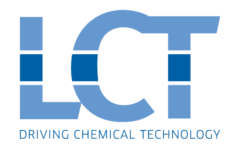Chemical looping process for Super-dry reforming of CO2 into CO
Aim
The deployment of a new chemical industry, fitting within the paradigm of circular economy, can only be achieved with new ideas and technologies. To address these, the project takes up the challenge to activate CO2 and (bio) CH4, two very stable molecules, and turn them into CO as chemical building blocks.
Context
In 2016, the EU ratified the Paris Agreement, a milestone in its vision to respond to the climate change threat. This makes the greenhouse gases carbon dioxide (CO2) and methane (CH4) both a challenge and an opportunity, the latter in the context of transition from a linear to a circular economy. Today, no efficient technologies exist that can directly use CO2 or bio CH4, as emitted from industrial and/or anaerobic fermentation point sources, for the production of value added chemicals. Driven by the need to develop technologies for converting large amounts of CO2, the Super-Dry Reforming (SDR) concept has been proposed and demonstrated at the Laboratory for Chemical Technology (LCT). Compared to regular dry reforming of (bio)methane, super-dry reforming is a strongly intensified process as it converts up to three CO2 molecules per molecule of CH4 into a pure CO stream. Taking into account that potential bio-methane production in the EU can reach up to 30Mt/y in the coming decade, this would allow to convert around 10% of current stationary point CO2 emissions into CO, but in principle any methane rich source can be used. In combination with renewable H2, produced for example from green electricity, CO can become a key platform molecule in a sustainable future.
Program
• Large scale material synthesis
As a large gap exists between laboratory catalysts/materials and the corresponding industrial solids, it is easy to understand the enormous importance of material manufacturing development from bench to pilot scale. Spray drying, a technique capable of producing materials on a kg scale.
The physicochemical properties of the synthesized materials will be determined with basic characterization techniques, with particular regard to gas sorption (determination of surface area and porosity), X-Ray Diffraction (XRD; crystallinity, particle size, lattice constants) and Elemental Analysis (e.g. ICP-MS).
• SDR Process development
We will use fixed-bed reactors for the SDR process, in order to optimize the spatial distribution of the oxygen storage material and CO2 sorbent within the reactor. A multi-reactor configuration will be used for continuous steady-state production of CO by super-dry reforming of CH4 with inherent separation of H2O from CO/CO2.
• Industrial process simulation
Advanced process simulations have the power to provide the high level of accuracy and detail needed so engineers can optimize flows, heat and mass transfer, and chemical reactions that drive overall process performance. The data obtained from the activity tests with fixed-bed reactors will be used for the process scale-up.
